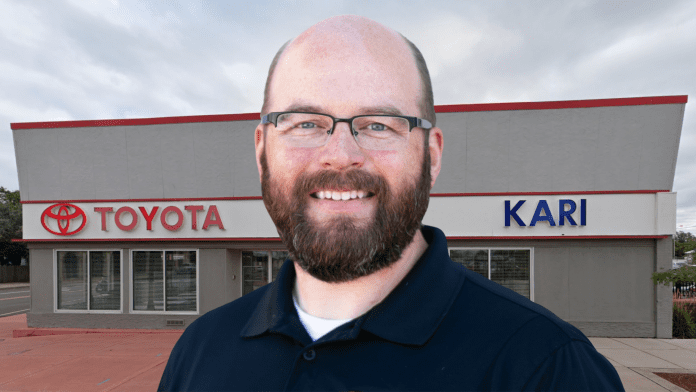The cost of courtesy loaner fleets presents a familiar challenge for every dealer: Spend on cars that can win customers and increase some RO values, or save on fleet costs and potentially lose CSI points and service volume?
Chris Kari, dealer principal at Kari Toyota in Superior, Wisconsin, spoke with CBT News about how he turned a last-ditch effort to curb fleet costs into a money-making rental program:
CBT: Rental programs have not traditionally been a reliable revenue source for dealerships. Why did you decide to start offering daily rentals?
CK: I became dealer principal in 2019, and there were seven cars in our courtesy fleet that were costing us a good chunk of money. I was just ready to try something different to see if we could make some money with these cars. If it didn’t pan out, we’d know we didn’t need to keep the fleet.
CBT: Here we are a few years later, so obviously the experiment worked. What were the operational challenges you had to overcome just to start renting cars?
CK: We were in the Rent-a-Toyota program, but at the time we weren’t using any of the fleet tools that Toyota recommends. We had a small team writing paper contracts and managing reservations out of a filing cabinet. We knew that would be a difficult way to manage any sort of rental volume, so I looked over the program tools and we updated our contracts with Dealerware. It looked like the simplest tool available in the program, and I wanted my existing team to manage rentals without needing to do drawn-out training. Adding Dealerware helped us use the right contracts for rental, because they’re different from loaner car contracts. Our customers tell us the experience is easier than what the rental agencies have, which is a plus.
Related reading: Should your auto dealership run its own rental/loaner car program?
CBT: And once you were set up, the rentals started rolling in?
CK: We set this up at the very beginning of 2020, so of course the pandemic slowed down our start. But by the summer, demand started to pick up, especially since the rental car companies sold lots of cars when travel was down. By the end of that first year, the fleet program was profitable by just a little bit, and I was so excited — it doesn’t seem like something to get excited over, but this is a cost center for any dealership. Being profitable was a big change for us and it was clear we were onto something.
CBT: What has been the impact on your business in the years since you started offering rentals?
"Like anything in the car business, we’re trying to accommodate our customers as best we can."
CK: 2022 revenues in the service and rental department tripled from what we saw in 2021, and were up 1200% compared to 2020. We’ve been able to grow the fleet from 7 cars up to now 27, and the rentals cover the cost of courtesy loaners that we give to our service customers and bring in profit on top of that. That’s been a great result, but we’re still learning. I think we could probably do even better if we could get more cars.
CBT: That’s a challenge the whole industry is still dealing with. Why are you growing your fleet instead of selling every car you can get from the factory?
CK: It’s been a long time since we had a car come into the showroom that wasn’t already pre-sold. I’m taking advantage of fleet allocations, but I will say the cars I get are spec’d differently than what I’d like — base-model vans make great rental cars, but I’m getting sport sedans or technology-package vans with sticker prices way over base. The way the used market is right now, I know I can still make good money on those cars as rentals and again when I sell them pre-owned. And having these cars in the rental fleet helps my team sell deeper into our inventory too. The sales team can tell a customer to come test drive a rental to see the features, and then they’ll put in an order with us. So, there’s a lot of upside to the rentals right now, and we’ll have to see how that changes as inventory comes back.
CBT: What advice do you have for other dealers interested in starting a rental program?
CK: Keep it simple. Like anything in the car business, we’re trying to accommodate our customers as best we can. So, I got my team set up with Dealerware to make it simple to manage rentals and write quick contracts. And I don’t limit my customers on mileage and don’t charge mileage, so pricing is straightforward for them. We get a lot of new customers who have never even been to a Toyota dealer before, so in a way that means rentals keep it simple for my sales team, too. Know your local laws, tax stuff and all that, but this doesn’t have to be a complicated thing. Keep it simple, learn how you need to adjust to make money, and rentals can be successful.




